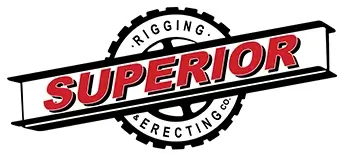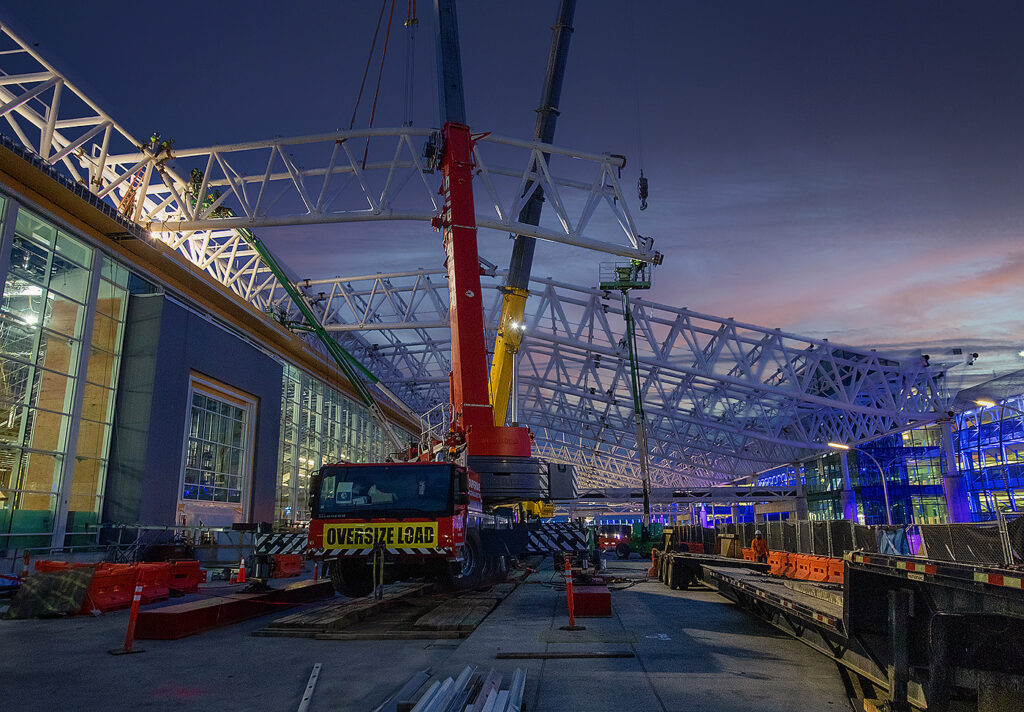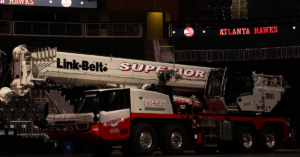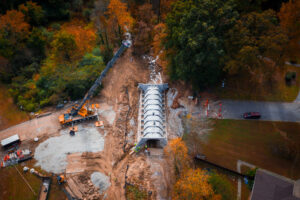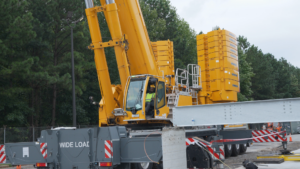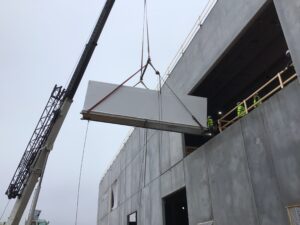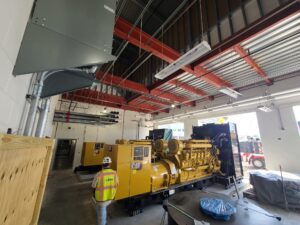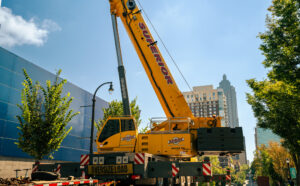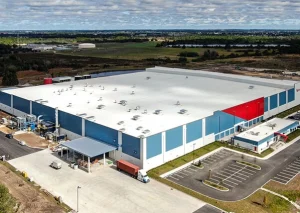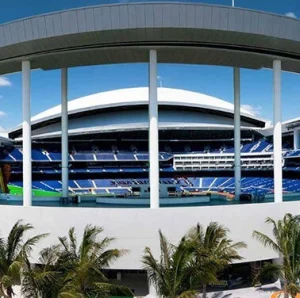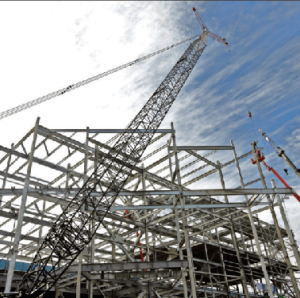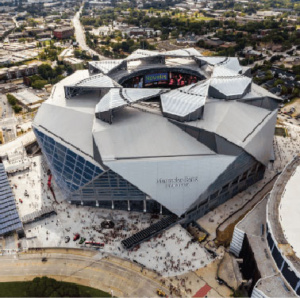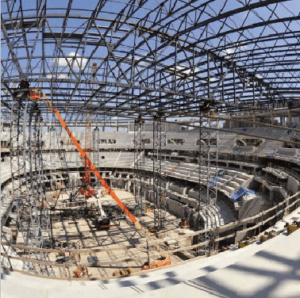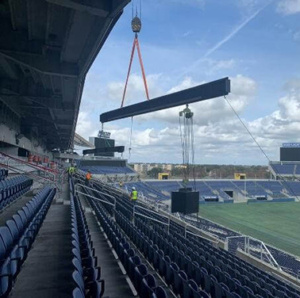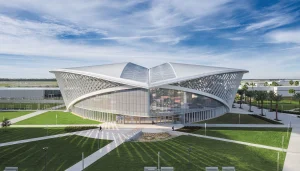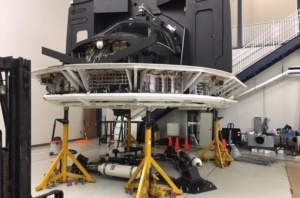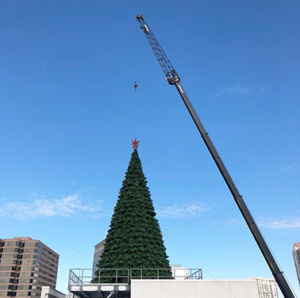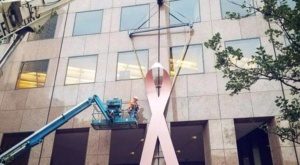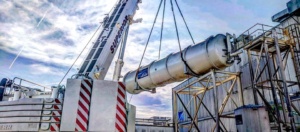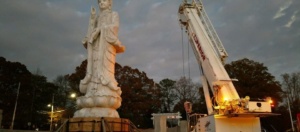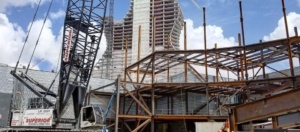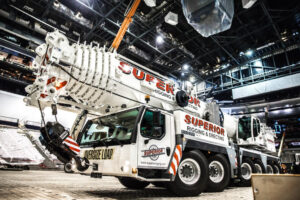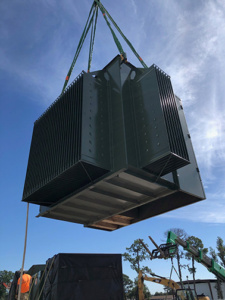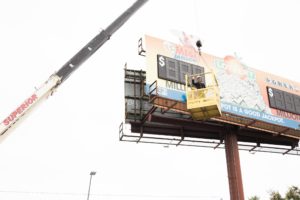If you’ve ever marveled at the sight of a sprawling industrial complex, you’ve witnessed the result of the complex process known as structural steel erection. This process involves the assembly of steel framework, providing a skeleton upon which the entire building stands.
Structural steel erection is more than simply putting pieces together; it’s an intricate ballet of precision, engineering, and coordination. A successful steel erection process transforms a technical drawing into a structure that becomes a staple of our landscape.
Why Steel?
Steel is a versatile and robust material. It plays an essential role in the structural integrity of modern buildings. Hospitals, schools, bridges and stadiums all depend on structural steel erection. The use of steel in construction projects offers numerous benefits, such as strength, durability, and flexibility, making it a go-to choice for developers and architects worldwide.
In the sections that follow, we will delve into the process of steel erection, discuss safety aspects, explore recent industry innovations, and highlight the contributions of a leading company in the field, Superior Rigging & Erecting Co. By the end of this blog post, you’ll have a comprehensive understanding of what structural steel erection entails, its importance, and its role in the broader construction industry
The Process of Steel Erection
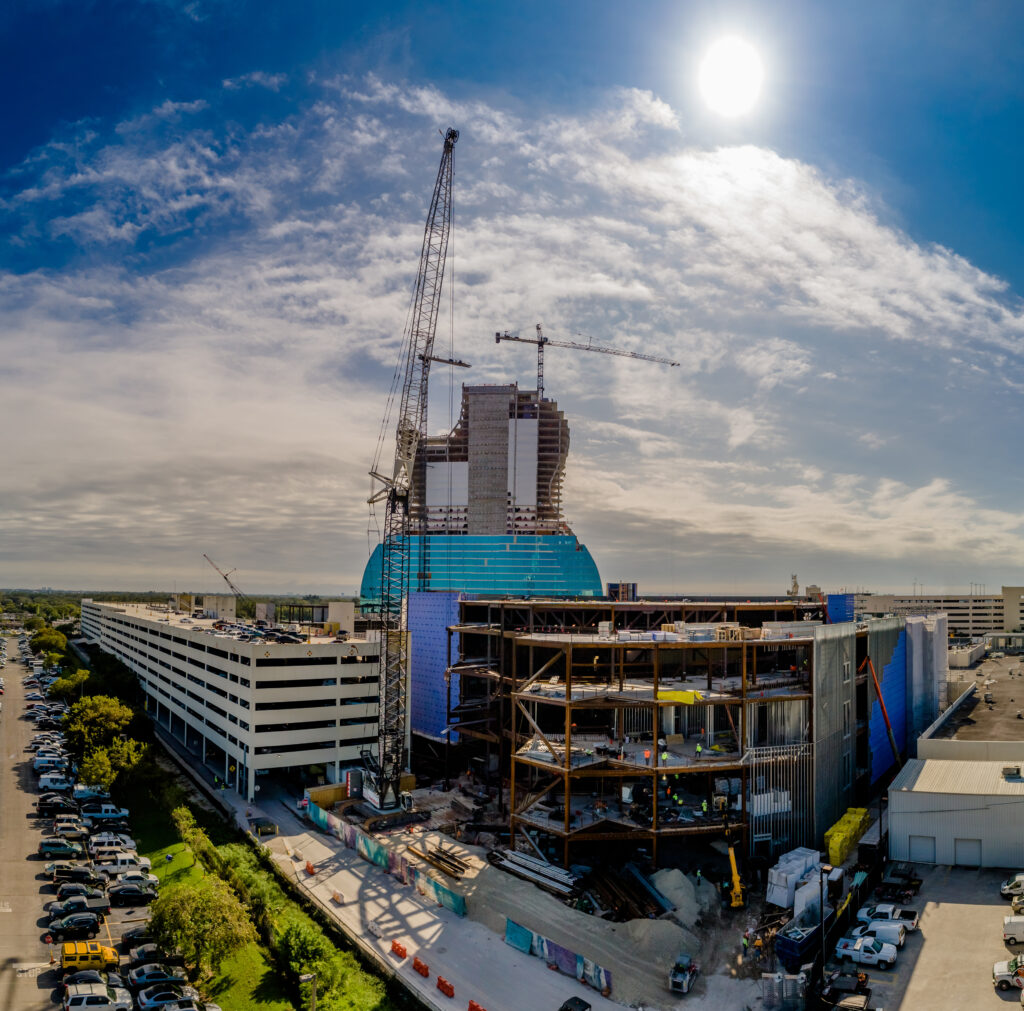
Planning and Design
Before any physical work begins on a construction site the erection process starts with the development of a detailed, site-specific erection plan. This plan outlines the sequence of operations and provides guidelines on safely erecting the structure. This plan ensures structural stability throughout the project.
An integral part of the planning phase involves the creation of erection drawings. These drawings are detailed blueprints for the ironworkers. They indicate where each steel beam, joist, and structural member fits into the overall structure. They also tell where each bolt, weld, and any other fittings should be made and how. Accurate erection drawings are critical in ensuring the correct assembly of the steel structure.
Preparation and Delivery
Once the plans are in place, the next step involves the delivery of structural elements to the construction site. This includes steel beams, structural iron, and other structural members. Each piece is typically prepared off-site and brought to the construction site when needed according to the site-specific erection plan.
Erection Process
At the heart of the erection process are the ironworkers. These skilled professionals, often assisted by crane operators, are responsible for aligning and securing the structural steel according to the erection drawings.
The ironworkers assemble the steel structure piece by piece. This usually begins with setting the structural columns in place and tying the steel beams to these for a stable structure. This work requires great precision. Each beam needs to be aligned correctly to ensure the structural stability of the entire building.
Finishing the Structure
Once all the structural members are in place, the ironworkers finalize the structure by bolting or welding the components together. This step gives the structure sufficient strength and prepares it for the installation of additional elements such as metal decking and steel studs.
Understanding the process of structural steel erection provides an insight into the complexities of this essential construction task. With each step carefully planned and executed, the result is a steel structure that stands strong, ready to serve its purpose for decades to come. In the next section, we will look at some of the safety aspects and challenges in steel erection.
Safety, Challenges, and Quality Control
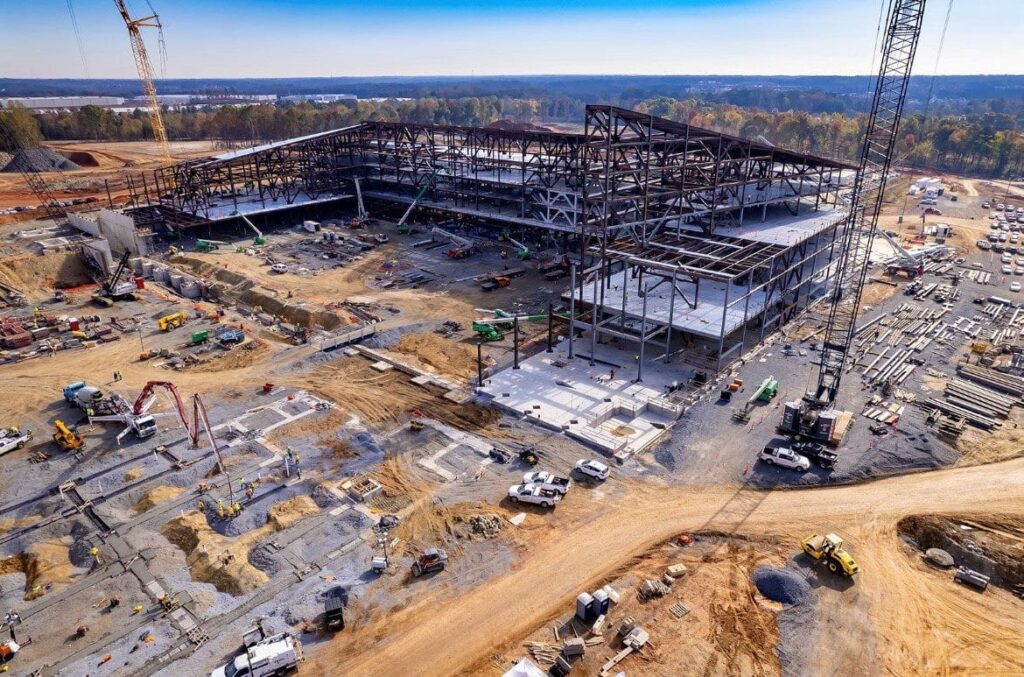
Structural steel erection is one of the most challenging processes in all of construction. It requires careful planning and execution to ensure not just the successful construction of the building, but also the safety of everyone involved in the project. Let’s delve into the safety measures and challenges encountered in steel erection.
Ensuring Structural Stability
One of the biggest challenges in steel erection is ensuring the structural stability of the steel frame during the erection process. The temporary structure must have sufficient strength to support itself and resist external forces like wind loads.
Shear connectors, which help achieve composite action between the steel beams and concrete slabs, play a crucial role in improving the structural stability of the steel frame. In addition, diagonal erection bridging and plumbing-up equipment are often used to stabilize the structure during the erection process.
Safety Measures in Steel Erection
Safety is always a top priority in any construction project, and steel erection is no different. Ironworkers must follow strict safety protocols to prevent accidents on the construction site. This includes wearing appropriate personal protective equipment and using fall protection systems when working at height.
A crucial part of safety in steel erection involves the creation and implementation of a comprehensive safety plan, which outlines safety protocols for various stages of the erection process. Regular safety inspections and audits also help ensure that these measures are being correctly implemented.
Addressing the Challenges of Steel Erection
Despite meticulous planning and stringent safety measures, steel erection can still pose challenges. Weather conditions, for example, can cause delays and affect the safety of the erection process. Site constraints, such as limited space for the storage of materials and machinery, can also make the erection process more complex.
Experienced ironworkers and construction teams can navigate these challenges with effective problem-solving and adaptability. After all, the successful completion of a steel structure not only requires technical skills but also a deep understanding of the unique circumstances regarding each construction project.
Quality control checks must be done alongside every step of the project. Ensuring that materials have the correct steel grade and dimensions according to the drawings is essential before doing anything on a project. It must also be verified that they are installed in accordance with the drawings, and a final check on the welding quality must be completed. Any deviations in quality must be addressed promptly and documented effectively.
As we delve deeper into the world of steel erection, it becomes evident how this complex process relies heavily on planning, precision, and safety measures. Now, let’s turn our attention to Superior Rigging & Erecting Co., a company that has been at the forefront of the steel erection industry, embodying these trends and setting a high standard for steel erection projects.
Superior Rigging & Erecting Co.: Pioneering the Future of Structural Steel Erection
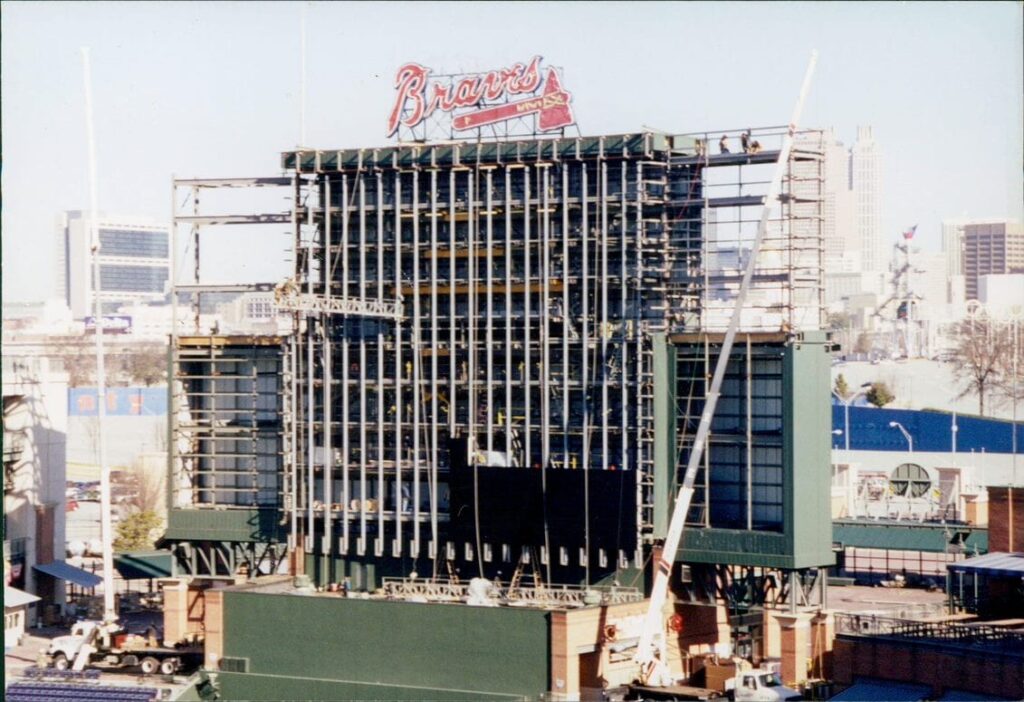
In the realm of structural steel erection, Superior Rigging & Erecting Co. stands as a testament to seven decades of unyielding dedication and outstanding craftsmanship. Founded in 1952, we have become a trusted partner for a multitude of services, including steel erection, crane rentals, rigging, architectural precast, and more.
Our expertise in navigating complex steel projects all across the United States, coupled with our unwavering commitment to delivering excellence, sets us apart in the industry.
The Cornerstones of Superior Rigging & Erecting Co.: Experience, Expertise, Adaptability, and Trust
Our reputation in the structural steel erection arena has been built upon four fundamental principles: Experience, Expertise, Adaptability, and Trust.
Experience – Our experience, spanning over 70 years, empowers us to tackle even the most intricate projects. From erecting low-rise steel structures to relocating heavy machinery, we handle a wide range of complexities with proficiency.
Expertise – At Superior Rigging & Erecting Co., we pride ourselves on our highly skilled team of ironworkers and crane operators. Our in-depth understanding of the erection process, from precision in erection drawings to ensuring structural strength during the erection process, is the key to our successful projects.
Adaptability – Our ability to adapt to the evolving landscape of the industry is a defining characteristic. As industry dynamics shift, we shift with them, integrating new technologies and methodologies to meet the needs of our clients and their diverse projects.
Trust – We have won the trust of our clients through consistent delivery of quality services. Safety, reliability, and professionalism are the keystones of our operations, making us a reliable partner for any steel erection project.
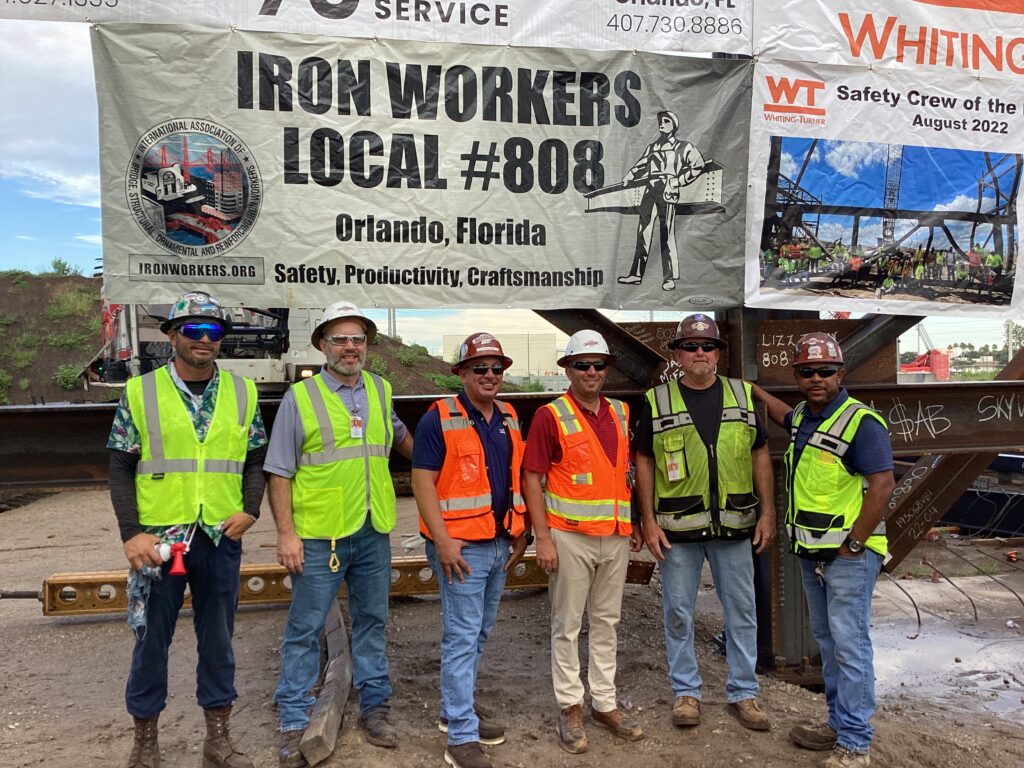
The Journey Ahead with SRE
As we look towards the future, Superior Rigging & Erecting Co. is geared to continue driving innovation in the steel erection industry. Our unwavering commitment to adopting industry advancements and upholding the highest safety standards allows us to consistently deliver extraordinary outcomes.
Interested in our steel erection services? Request a quote today.
